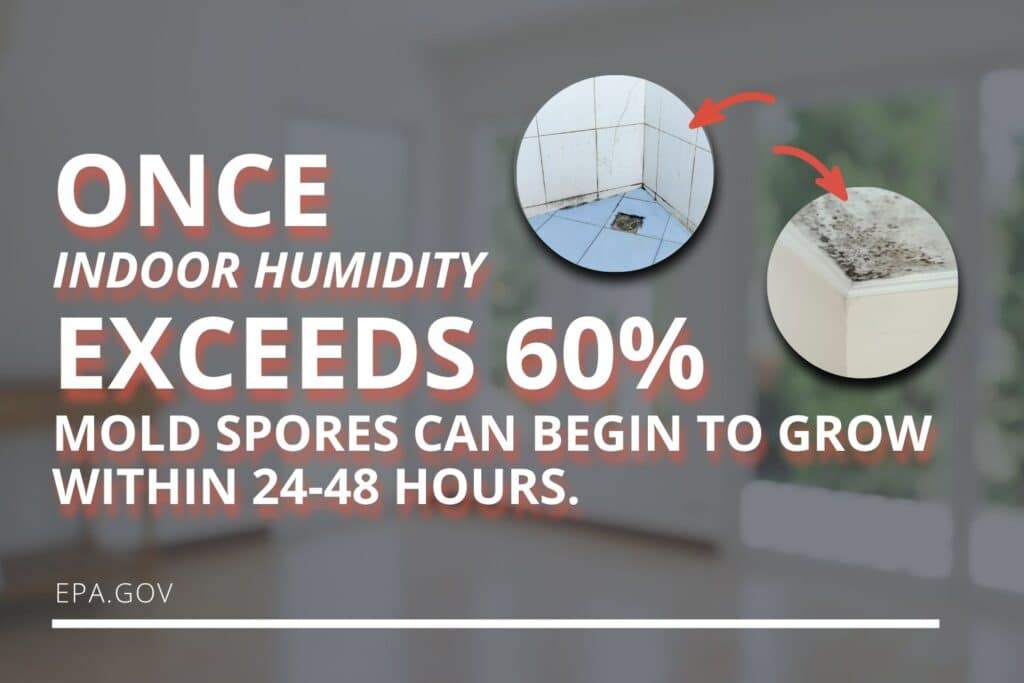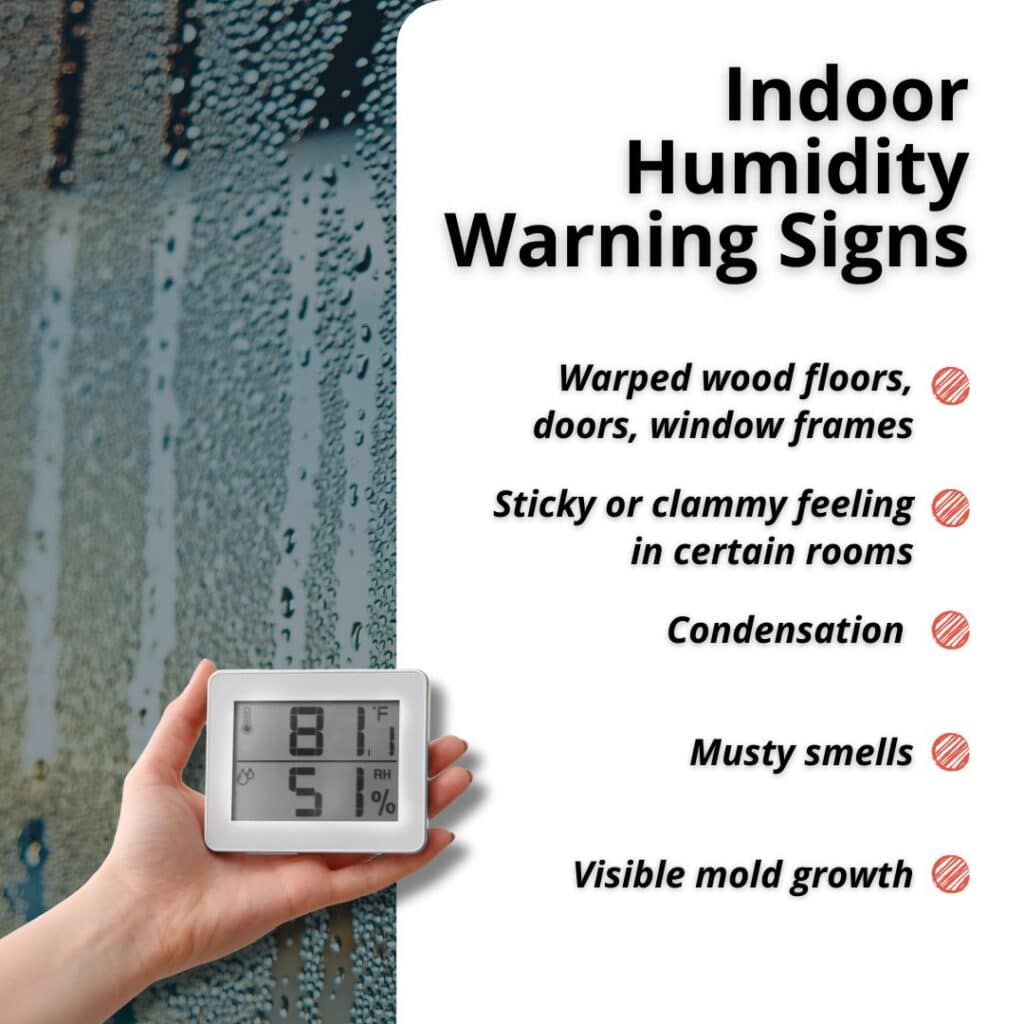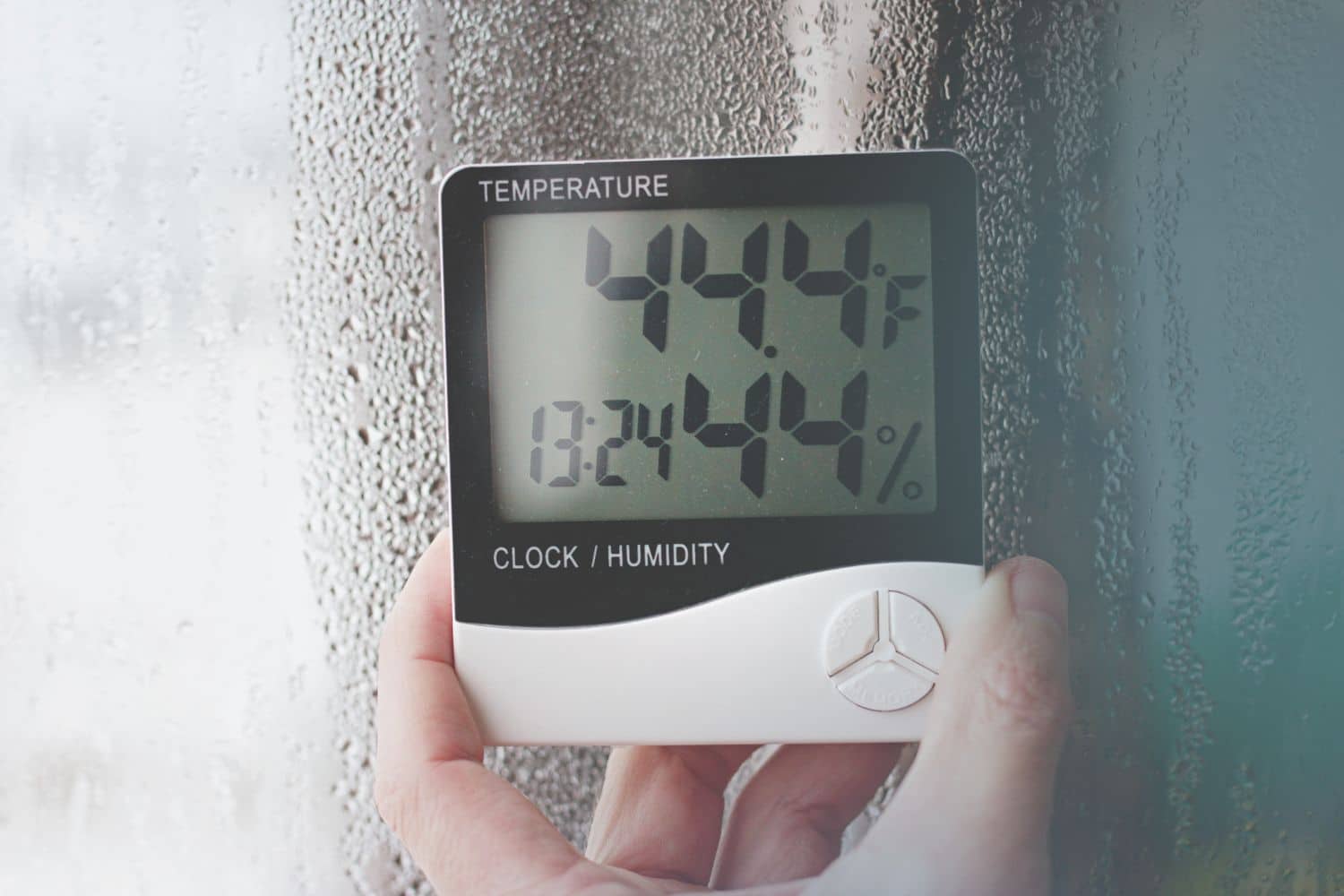In Central Florida, humidity isn’t just something you feel when you step outside. It often finds its way into homes, too. High indoor humidity can make a house feel sticky and uncomfortable, but it also does more than that. Over time, excess moisture inside can lead to mold, damage to wood and drywall, and higher energy bills as your air conditioning system works harder to keep things cool.
At Tier-1 Pro Inspections, we see signs of humidity-related damage all the time. Whether we’re inspecting for buyers, sellers, or homeowners keeping up with maintenance, moisture is often at the root of hidden issues. Knowing when and how to lower indoor humidity can help protect your home and keep it more comfortable year-round.
When It’s Time to Address Humidity
Ideally, your home’s indoor humidity level should stay between 30 and 50 percent. The Florida Department of Health notes that keeping levels below 50 percent reduces the chance of mold growth.
If levels get higher than that, you might notice:
• A clammy or sticky feeling inside the house
• Condensation on windows or walls
• A musty smell in certain rooms or areas
• Mold or mildew spots, especially around bathrooms, kitchens, or closets
• Warping or swelling in wood floors, doors, or trim
These are signs it’s time to take action. In our region, this can happen even when the weather doesn’t feel especially humid outside. That’s because daily activities like cooking, showering, or even running appliances can add moisture to indoor air.

How to Lower Humidity in Your House
Lowering indoor humidity is often a matter of combining several smart steps. No single solution works in every case, but these approaches help in most homes:
1) Use your air conditioning effectively
Your AC doesn’t just cool the air. It also removes moisture as part of its normal function. Make sure your system is properly sized for your home, has clean filters, and gets regular maintenance. A well-tuned system helps keep humidity under control.
2) Run exhaust fans where needed
Bathroom and kitchen fans play a key role in getting moist air out of the house. Use them while cooking or bathing and for a little while after. If your home doesn’t have these fans, it may be worth installing them.
3) Consider a dehumidifier
A portable or whole-house dehumidifier can make a big difference in homes that struggle with high humidity. These systems pull moisture from the air and help keep levels stable, especially during the rainy season or in areas like basements or garages.
4) Seal air leaks
Humidity often sneaks in through gaps around windows, doors, and ductwork. Sealing these leaks not only helps with moisture but also improves your home’s energy efficiency.
5) Limit indoor moisture sources
Try to avoid drying clothes indoors or overwatering plants. Both can add more moisture to the air.
6) Improve drainage around your home
Make sure gutters, downspouts, and grading direct water away from your foundation. Excess moisture outside can seep in and raise indoor humidity levels.
What Inspectors Notice
During an inspection, we look for both signs of high humidity and the conditions that could contribute to it in the house. This includes checking for:
• Visible mold or mildew
• Condensation on surfaces
• Water stains or damage
• Poor ventilation in key areas
• Leaks around plumbing fixtures or the roof
• Gaps around windows or doors
We also note if the home’s systems, like air conditioning and exhaust fans, appear to be working as they should. Our reports help homeowners and buyers understand where improvements could reduce moisture and protect the property.

Why It Matters for Florida Homes
In our region, the warm, moist climate means homes face constant pressure from humidity. Left unchecked, it can lead to wood rot, pest issues, and costly repairs. It can also create conditions that make a home feel less comfortable and drive up cooling costs.
Buyers should pay attention to signs of high humidity when evaluating a property. For sellers, addressing these concerns before listing can help avoid problems during the inspection process.
Related Maintenance and Common Questions
Lowering humidity is just one part of keeping a house healthy and in good shape. Other smart steps include:
• Scheduling regular HVAC service to keep systems working efficiently
• Cleaning and maintaining gutters to prevent water intrusion
• Checking crawl spaces and attics for signs of moisture or poor ventilation
• Using moisture barriers where appropriate, such as in crawl spaces
These steps work together to protect your home from moisture damage and support a healthier living environment.
Is it normal for homes in Florida to have high indoor humidity?
It is common for indoor humidity to rise in our climate, but it can and should be managed.
Will a dehumidifier increase my energy bills?
A dehumidifier uses energy, but it can help your AC work more efficiently and may reduce overall cooling costs.
Can high humidity affect my home’s structure?
Yes. Over time, excess moisture can damage wood, drywall, paint, and flooring, and contribute to mold growth.
What is a good humidity level inside a house?
Most experts, including the Florida Department of Health, recommend keeping indoor humidity below 50 percent.
Conclusion
Managing humidity is essential for protecting any house, but especially in areas like Central Florida. Whether you’re buying, selling, or simply maintaining your property, paying attention to indoor moisture levels helps prevent damage and keeps your home comfortable. Tier-1 Pro Inspections provides careful evaluations to help identify risks and offer practical recommendations.
If you want a clear picture of how your home handles moisture, or you’re planning for improvements, we’re here to help.

